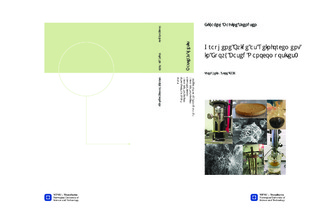| dc.description.abstract | Graphene oxide has received much attention in recent years because of its many promising properties. Graphene oxide can be used to produce graphene in large quantities, and in addition graphene oxide has many promising properties itself, such as its high level of dispersion in polar solvents, and good compatibility with various polymers. Addition of nanoparticles in composite materials have been tested for many years, and in recent years carbon nanotubes have been in focus as a reinforcement. Graphene oxide is considered very promising for reinforcement of composite materials and several studies have shown improvements in Young's Modulus-, tensile strength, and fracture toughness by adding graphene oxide into nanocomposites.
In this thesis, the way in which the mechanical properties of epoxy composite materials were affected by addition of various forms of graphene oxide was studied. The same epoxy resin (Araldite LY556) was used in all experiments, while other parameters were changed. Various experiments were performed with addition of graphene oxide, exfoliated graphene oxide and functionalized graphene oxide. Both water and acetone were used as solvents, para-phenyelenediamine and XB3473 were used for the functionalization of the graphene oxide, and two different hardeners were used (XB3473 and isophorone diamine). Experiments with the dispersion of graphene oxide in various solvents were first performed. Graphene oxide was dispersed in an ultrasonic bath and by using ultrasonic horn. The graphene oxide dispersions were analyzed in a disk centrifuge. This data was used for the further experiments when transferring graphene oxide into the epoxy. The graphene oxide was wet transferred into the epoxy in either water or acetone. The functionalized graphene oxide was analyzed with XPS.
Despite the fact that previous studies have shown promising results for the reinforcement of composites with graphene oxide, the same impressive improvements were not found in this M.Sc. thesis. Problems with homogeneous dispersion were possibly the cause of these findings. The XPS indicated a successful functionalization of graphene oxide with para-phenyelenediamine. | |

